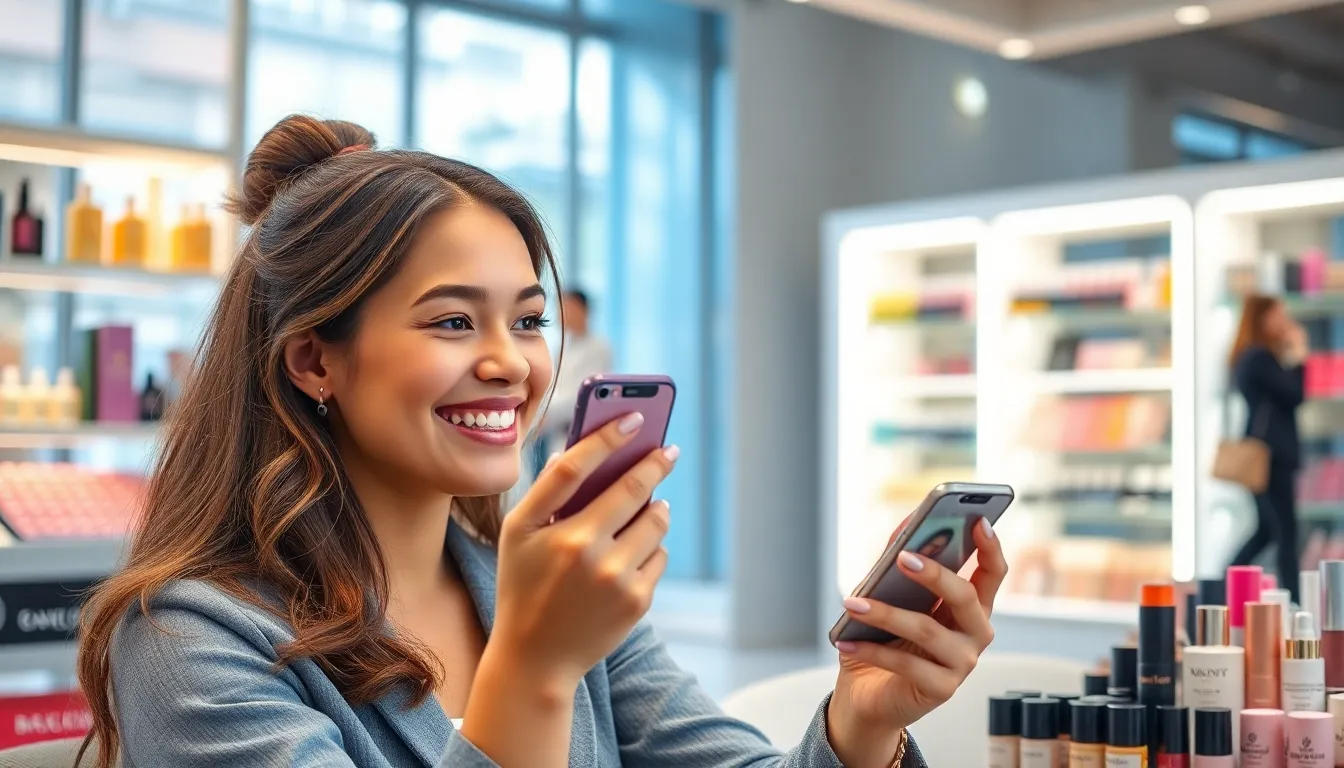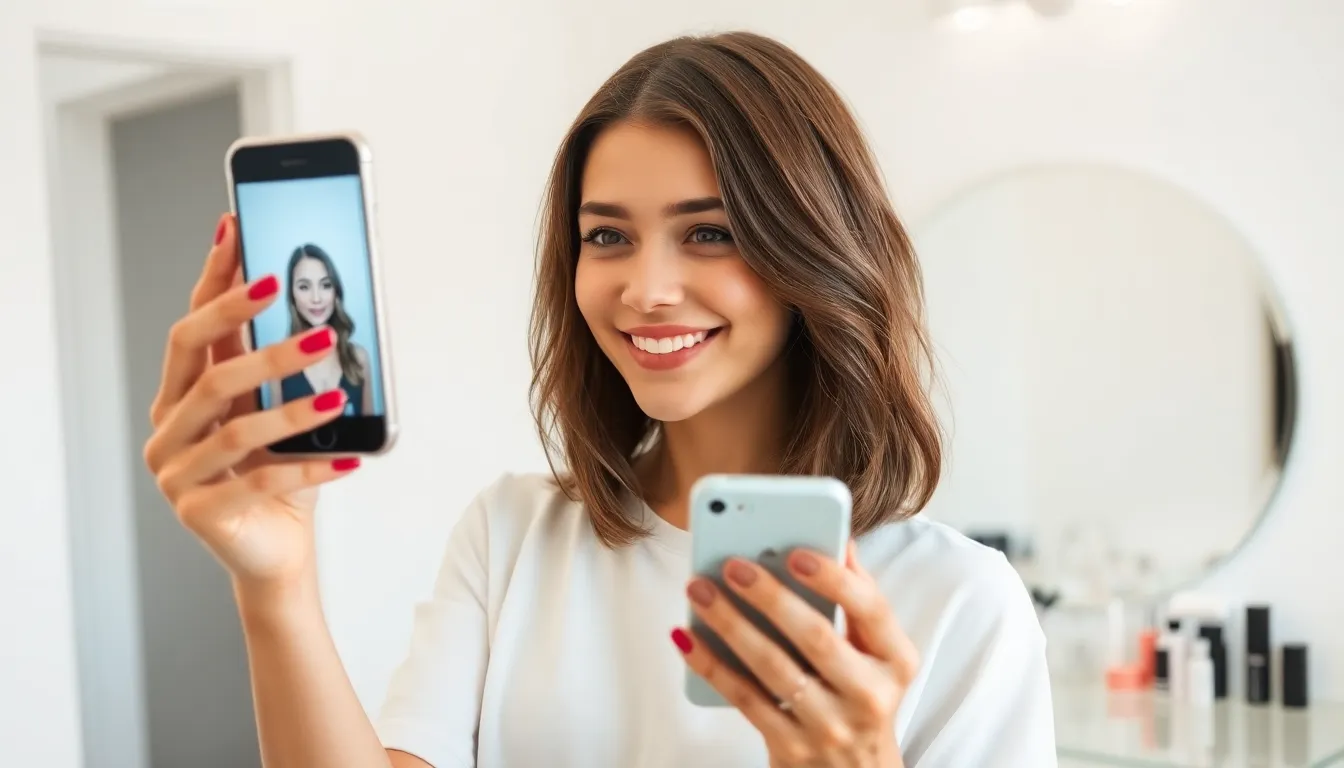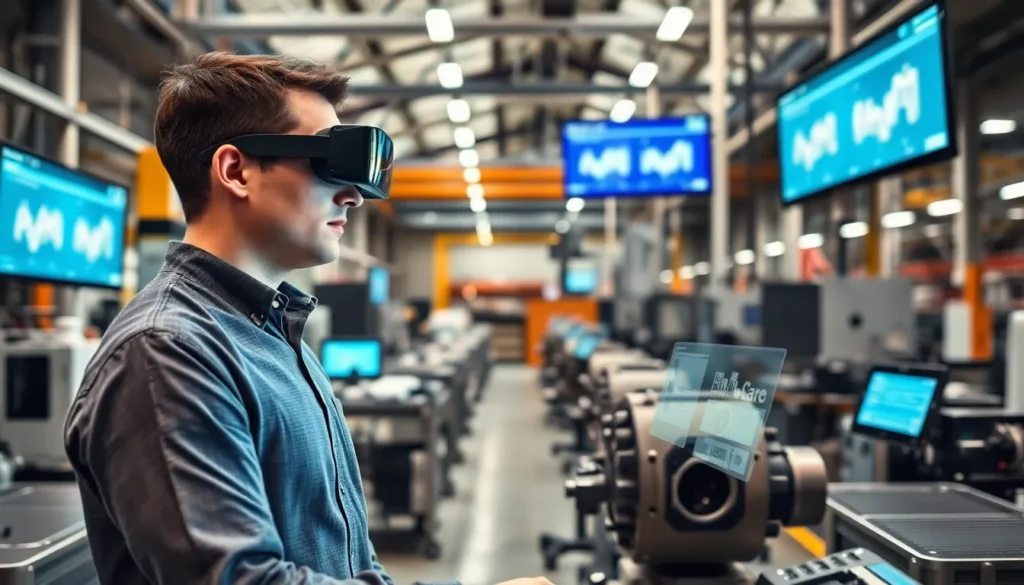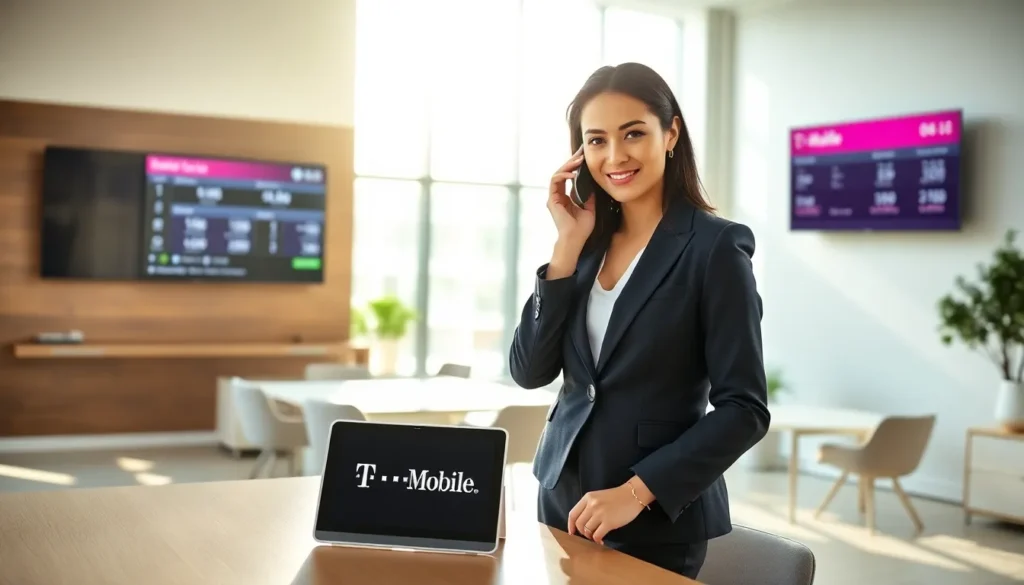Imagine trying on a dazzling shade of lipstick without ever leaving your couch. Welcome to the world of cosmetic augmented reality (AR), where beauty meets technology in the most fabulous way possible. Gone are the days of messy swatches and questionable makeup choices. With just a swipe, anyone can transform into their most glamorous self, all while avoiding the dreaded makeup mishaps.
Table of Contents
ToggleOverview of Cosmetic AR
Cosmetic augmented reality (AR) brings innovative technology to the beauty industry. This technology allows users to apply virtual makeup through apps and software. Users can visualize how different products appear on their skin in real time. Augmented reality filters enhance this experience by overlaying digital images on the user’s live video feed.
Brands increasingly adopt AR to streamline the shopping experience. Virtual try-ons eliminate the hassle of testing products in-store. High-definition graphics ensure that colors and textures appear realistic and appealing. More than just lipstick, users can explore foundation, eyeshadow, and lip gloss options, significantly expanding their choices.
A few notable brands have successfully integrated AR into their marketing strategies. Sephora offers a virtual artist feature, empowering customers to try hundreds of products instantly. L’Oreal’s AR app provides a personalized experience by suggesting styles based on facial analysis. Similarly, Ulta Beauty leverages AR to enable users to experiment with various looks without commitment.
Statistics reveal the effectiveness of cosmetic AR in increasing customer engagement. Approximately 70% of users report higher satisfaction rates after utilizing AR features while shopping. Many cite reduced product returns due to more informed purchasing decisions. The ability to see how makeup interacts with different skin tones leads to more confident choices.
User-generated content thrives alongside AR applications. As customers share their virtual makeup looks on social media, organic marketing opportunities arise for brands. In turn, this fosters a community of beauty enthusiasts eager to discover new trends. Virtual try-ons, therefore, not only enhance individual experiences but also create a collective influence on the industry.
Benefits of Cosmetic AR

Cosmetic augmented reality (AR) offers significant advantages for both consumers and beauty brands, enhancing interactions and transforming the shopping experience.
Enhanced Customer Experience
AR technology creates a unique experience for users, allowing them to visualize products in real time. Users can try on multiple products without leaving home, making the selection process enjoyable and efficient. This eliminates the need for testers, resulting in a cleaner and more organized approach to beauty shopping. Convenience continues to be a major factor in customer satisfaction. Approximately 70% of users report feeling more confident in their purchases after using AR features, resulting in fewer mistakes and an overall improved buying experience.
Increased Engagement
AR encourages users to engage with products on a deeper level. Virtual try-on features invite consumers to explore various looks, leading to increased interaction time with brands. Consumers frequently share their virtual experiences on social media, generating buzz and sparking interest among peers. User-generated content thrives in this environment, promoting organic marketing. As customers share and discover new trends, a sense of community forms, benefiting both the user and the brand. Overall, AR enriches the shopping experience, fostering a loyal customer base that actively participates in brand engagement.
Technology Behind Cosmetic AR
Cosmetic augmented reality (AR) leverages advanced technology to bring innovative experiences to beauty enthusiasts. Users benefit from a variety of tools that enhance visualization and engagement.
Augmented Reality Tools
AR tools consist of mobile applications and web-based platforms that allow users to test virtual makeup in real time. Advanced algorithms create accurate facial tracking, ensuring seamless application of products as users move. Filters not only overlay makeup designs but also adjust to skin tone and texture, enhancing realism. For example, companies like Sephora use these tools to provide personalized recommendations based on individual user profiles. Additionally, real-time feedback helps users make informed decisions about their choices.
Integration with E-Commerce
E-commerce platforms increasingly incorporate AR features to transform online shopping. Virtual try-ons allow customers to interact with products as if they were in a physical store, providing a tactile experience. Brands such as L’Oreal and Ulta Beauty have adopted this technology, resulting in higher conversion rates. Statistics demonstrate that users are 55% more likely to complete a purchase after experiencing AR features. Enhanced product visualization reduces uncertainty, which ultimately lowers return rates, benefiting both customers and retailers.
Challenges in Implementing Cosmetic AR
Cosmetic augmented reality (AR) faces several challenges that impact its implementation and user adoption.
Technical Limitations
Technical challenges often hinder the seamless integration of AR in cosmetic applications. High processing power and advanced graphics capability are necessary for delivering realistic experiences. Many smartphones may not support these requirements, leading to performance issues. Accuracy also poses a significant challenge, as facial recognition and tracking must be precise for virtual makeup application to appear authentic. Users may experience glitches if AR systems fail to adjust properly to different lighting conditions or facial movements. These technical limitations can affect user satisfaction and engagement, ultimately influencing a brand’s ability to attract and retain customers.
User Acceptance
User acceptance plays a critical role in the success of cosmetic AR deployments. Some individuals may feel skeptical about trusting virtual products over traditional methods. Concerns regarding how accurately AR displays the makeup can deter potential users. Additionally, a learning curve exists for those unfamiliar with technology, impacting their willingness to engage with AR features. Brands face the challenge of educating customers about the benefits and usability of AR applications. Effective marketing strategies that highlight convenience and ease of use can increase confidence and encourage users to embrace the technology fully. Engaging user experiences often lead to greater acceptance levels and positive feedback within the community.
Future Trends in Cosmetic AR
Emerging technologies continue to shape the cosmetic AR landscape. Artificial intelligence plays a crucial role in improving personalization. Brands are likely to adopt more sophisticated algorithms that analyze user preferences to recommend makeup products effectively.
Sustainability emerges as a significant trend within the industry. Consumers increasingly gravitate towards eco-friendly beauty products, influencing brands to incorporate sustainable practices into their AR experiences. Virtual try-ons reduce waste by allowing customers to experiment without purchasing unwanted items.
Remote collaboration is set to gain popularity. Users will connect with beauty experts virtually for guidance, enhancing the shopping experience. Video calls combined with AR try-ons enable real-time consultations, making expert advice more accessible.
Increased social media integration is anticipated to drive community engagement. As customers share their virtual makeup experiences, brands can benefit from organic marketing. User-generated content continues to foster brand loyalty and create vibrant communities centered around beauty.
Investments in high-definition graphics will enhance realism. High-quality visualizations of textures and colors will elevate the virtual experience. Users can expect to see even more lifelike representations of makeup products, making decisions easier and more informed.
Continuous advancements in mobile technology will support AR’s growth. Improved smartphone capabilities enable smoother transitions between real and virtual realities. Consequently, users will find AR experiences more seamless and engaging, driving adoption rates higher.
The future promises exciting developments for cosmetic AR. Progress in technology, sustainability, and consumer engagement strategies will reshape the beauty shopping experience, making it more interactive and personalized than ever before.
Cosmetic AR is transforming the beauty industry by providing users with an innovative way to explore and experiment with products. This technology not only enhances the shopping experience but also builds confidence among consumers by allowing them to visualize how products will look in real time.
As brands continue to adopt AR features, the focus on personalization and community engagement will only grow. The future of cosmetic AR looks promising with advancements in technology and increasing consumer acceptance. With its ability to streamline the shopping process and reduce return rates, cosmetic AR is set to become an essential tool for both beauty enthusiasts and retailers alike.





